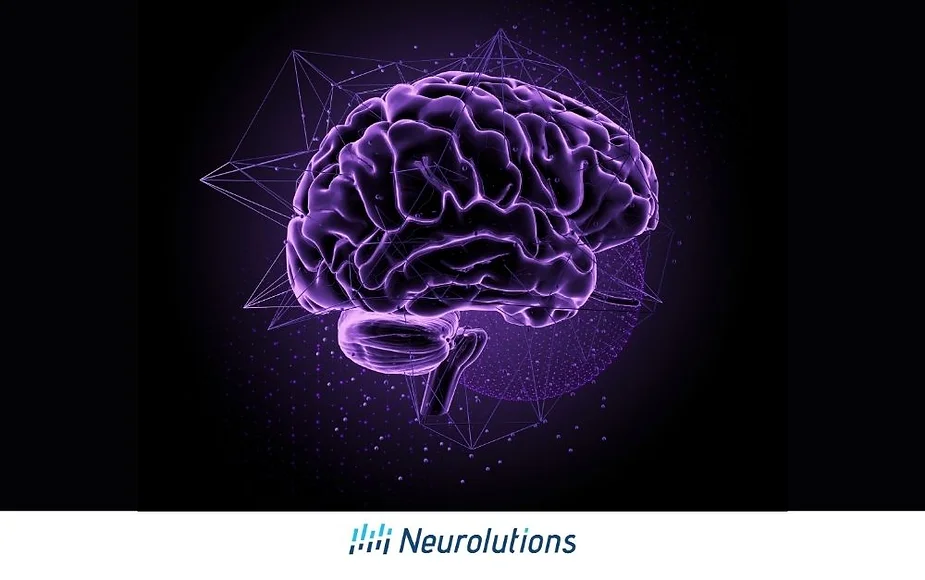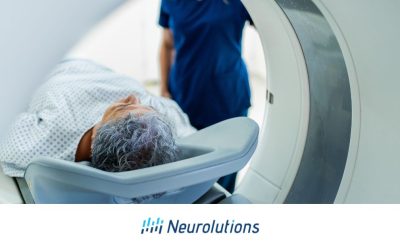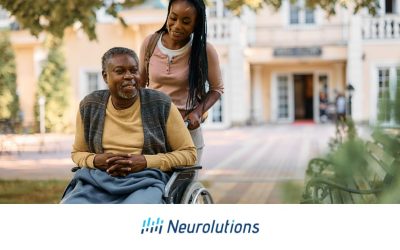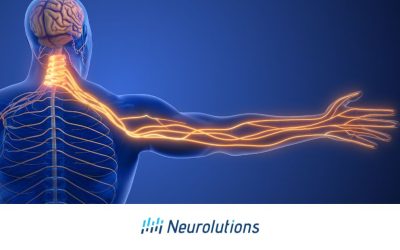Stroke survivors should be aware of amygdala damage because it can have significant implications for their emotional well-being, social interactions, and overall quality of life. This article discusses the impact of amygdala damage from a stroke and what types of treatment are available for recovery.
Introduction to the Amygdala
The amygdala is a small part of the brain that controls emotions, emotional behavior, and motivations.
At a high level, the amygdala is primarily associated with the following brain functions within the limbic system:
- Emotional processing
- Emotional memory
- Social behavior and social cognition
- Modulation of attention
- Stress response
The amygdala is particularly involved in the body’s response to fear. Once the amygdala perceives a threat, it activates a cascade of responses involving other parts of the brain, including the hypothalamus. The amygdala communicates with the hypothalamus through neural connections, influencing the release of stress hormones like adrenaline and cortisol, which initiate the “fight-or-flight” response.
The amygdala is a highly interconnected organ, and many of these functions involve interactions with other brain regions.
What happens to the amygdala after a stroke?
Damage of the amygdala can often be caused by stroke, traumatic brain injury, and other neurological conditions. When a stroke occurs, you may experience a hemorrhagic stroke (bleeding in the brain), or ischemic stroke (blockage of blood flow). Both of these strokes can cause damage to the amygdala.
Amygdala damage is known to correlate with dysregulation of emotions and behavior. The stroke survivor may experience various emotional and behavioral effects, such as depression, increase of aggression and stress, anxiety, emotional regulations, or impaired decision-making.
In addition, the severity and location of the stroke influences the extent of damage to the amygdala. For example, when a stroke affects the temporal lobe, including the region near the amygdala, there is a possibility of damage to the amygdala itself. If the stroke affects blood supply to the amygdala directly, it could result in varying degrees of impairment in emotional processing.
How is a Damaged Amygdala Diagnosed?
Diagnosing damage specifically to the amygdala after a stroke can be challenging. This is because the amygdala is a relatively small structure located deep within the brain, and its damage may not always be apparent on routine brain imaging scans, such as MRIs, PET scans, EEGs, or MEGs.
In addition to medical history and imaging scans, neuropsychological testing may be involved. This testing may provide further insight into emotional processing and damage associated with the amygdala. A multidimensional approach allows healthcare professions to gather as much information as possible to understand the impact of stroke on the amygdala and its associated functions.
What Type of Treatment is Available when there is Amygdala Damage Post-Stroke?
Currently, there is no specific treatment targeted solely at repairing or regenerating damaged amygdala tissue after a stroke. However, the treatment for amygdala damage after a stroke primarily focuses on managing associated symptoms and promoting overall recovery.
Here are some general approaches that may be employed:
Rehabilitation Therapy
Stroke survivors may undergo various rehabilitation therapies, such as physical therapy, occupational therapy, speech therapy, and cognitive therapy. These therapies aim to address deficits in motor function, cognitive abilities, language skills and overall functional independence.
Emotional Support and Counseling
Stroke survivors with amygdala damage may experience emotional changes and challenges. Emotional support, counseling, and therapy can help individuals and their families cope with emotional difficulties, improve emotional regulation, and develop adaptive coping strategies.
Pharmacological Interventions
Medications may be prescribed to manage specific symptoms associated with amygdala damage after a stroke. For example, antidepressants or anti-anxiety medications may be prescribed to alleviate mood disturbance or anxiety symptoms. However, medication choices and their suitability depend on individual circumstances and should be determined in consultation with a healthcare provider.
Cognitive and Emotional Strategies
Cognitive and emotional strategies can be taught to stroke survivors to help compensate for any deficits associated with amygdala damage. These strategies may include techniques for emotional regulation, stress management, mindfulness exercises, memory enhancement, and social skill training.
Social Support and Rehabilitation
Engaging in social activities, support groups, or rehabilitation programs can provide stroke survivors with opportunities to practice social skills, improve social interactions, and enhance overall quality of life.
It is important to note that treatment plans should be personalized based on individual needs, symptoms, and overall health. Therefore, stroke survivors with amygdala damage should consult with a multidisciplinary team of healthcare professionals, such as neurologists, rehabilitation specialists, neuropsychologists, and therapists who can assess specific needs and design a comprehensive treatment program.
How can you keep your amygdala healthy?
While you cannot directly control the health of your amygdala, you can engage in activities that support your overall brain health, which indirectly supports the wellbeing of your amygdala.
Here are some ways you can support a healthy brain, which supports the amygdala:
Healthy Lifestyle
Adopting a healthy lifestyle can benefit your brain. This includes regular physical exercise, maintaining a balanced diet, staying hydrated, physically fit, and avoiding excessive alcohol consumption.
Mental Stimulation
Engage in activities that stimulate and challenge your brain. This can include reading, solving puzzles, learning new skills, playing musical instruments, or participating in intellectually stimulating hobbies.
Stress Management
Stress can have a negative effect on the brain- especially when chronic- including the amygdala. Practice stress management techniques such as mindfulness meditation, deep breathing exercises, yoga, or engaging in activities you enjoy to reduce stress and promote emotional well-being.
Quality Sleep
Adequate sleep is essential for brain health. Strive for regular, qualifty sleep by maintaining a consistent sleep schedule, creating a sleep-friendly environment, and practicing good sleep hygiene.
Social Connections
Engaging in social activities and maintaining strong social connection can support brain health, interacting with others, having meaningful relationships, and participation in social activities can contribute to emotional well-being and cognitive stimulation.
Manage Chronic Conditions
Take steps to manage chronic conditions that may impact brain health, such as diabetes, hypertension, and cardiovascular disease.
Avoid Smoking And Substance Abuse
Substance abuse can have detrimental effects on brain health. Seek help from a professional if you struggle with addiction. Work through anger management issues, and disorders such as PTSD, anxiety, and depression
It is important to consult with healthcare professionals, such as neurologists, neuropsychologists, or rehabilitation specialists to develop a personalized treatment plan based on unique circumstances if amygdala damage is likely. They can assess the specific impact of amygdala damage and recommend appropriate interventions to maximize recovery and impact quality of life.
References:
- https://www.stroke.org/-/media/stroke-files/lets-talk-about-stroke/life-after-stroke/ltas_changes-caused-by-stroke.pdf?la=en
- https://nba.uth.tmc.edu/neuroscience/m/s4/chapter06.html
- https://pubmed.ncbi.nlm.nih.gov/2310319/
- https://www.flintrehab.com/damage-to-the-amygdala/#:~:text=Damage%20to%20the%20amygdala%20can,just%20to%20name%20a%20few.
- https://www.frontiersin.org/articles/10.3389/fnins.2020.00677/full
- https://my.clevelandclinic.org/health/body/24894-amygdala
- https://thenewgait.com/blog/damage-to-the-amygdala/
- https://www.youtube.com/watch?v=PglaInxZfUc
- https://www.youtube.com/watch?v=q7_7bwHmG4M





